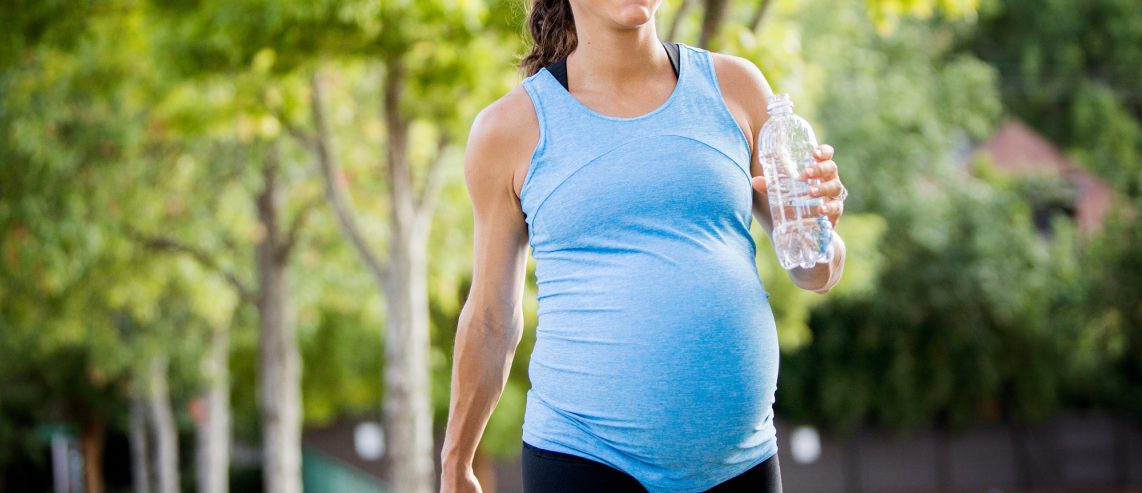Staying physically active is an essential part of any healthy lifestyle. That includes during and after pregnancy.
At least 150 minutes of moderate aerobic activity per week during pregnancy and the postpartum period can offer a range of benefits. That’s according to the American College of Obstetricians and Gynecologists.
Never Miss a Beat!
Subscribe to Our HealthBeat Newsletter!
Thank you for subscribing!
You can now select the specific newsletters you'd like to receive.
You are already subscribed.
Subscribe to more newsletters in our email preference center.
Sorry, an error occurred. Please try again later.
Get Healthy Tips Sent to Your Phone!
Benefits of Exercise During and After Pregnancy
People who exercise during pregnancy have a lower risk of developing gestational diabetes and high blood pressure. They’re also less likely to give birth prematurely or by cesarean section.
Exercise can also help ease lower back pain during pregnancy, improve sleep, and boost energy levels. It can also hold off excess weight gain and build muscle tone and endurance.
Postpartum exercise may shorten recovery time and fight depression.
“Staying active during pregnancy is good for you and the baby,” says Susan George, PT, DPT. Susan is a physical therapist at the UPMC Rehabilitation Institute outpatient rehab clinic in McCandless. “People who exercise during pregnancy tend to feel better,” she adds.
What Types of Exercise Are Safe?
Many physical activities are safe for pregnant women. Women should talk to their health care providers ahead of time to make sure there’s no reason they should avoid exercise.
Activities considered safe and beneficial for pregnant people include:
- Dancing.
- Hydrotherapy, such as swimming.
- Moderate aerobic exercises.
- Modified yoga and/or Pilates.
- Resistance exercises.
- Stationary cycling.
- Stretching exercises.
- Walking.
Some adjustments may become necessary as the body changes.
“During pregnancy, a good gauge of exercise intensity is your capacity to still carry on a conversation,” says Susan. “Balance your activities with rest when you need it, along with sufficient fluid and caloric intake. If something doesn’t feel right, consult your obstetrician during the pregnancy-postpartum year.”
Even a brisk walk or a short swim can help during pregnancy.
“For some people, reframing exercise as participating in physical activities that you already enjoy is motivating,” says George.
When and How to Stay Active
Women who are active before pregnancy can often continue to exercise with some adjustments. Those who were more sedentary may find pregnancy an ideal time to become more active.
Women who haven’t been pregnant for long may need a more gradual approach to increase their endurance. They should make sure they stay hydrated, take in enough calories to prevent weight loss, and avoid overheating.
Susan says making sure muscles, joints, and ligaments can handle physical tasks during pregnancy is important. This is especially important as the body’s center of gravity shifts, she adds.
You may need guidance to improve muscle strength, adjust your exercise routine, manage urinary incontinence, or relieve pain. A physical therapist who specializes in pregnancy and postpartum rehabilitation can help.
There’s no evidence that regular exercise during pregnancy leads to miscarriage. There’s also no evidence that it leads to premature delivery in uncomplicated pregnancies. That’s according to the American College of Obstetricians and Gynecologists.
There are still some types of exercise pregnant women should avoid, says Susan. These can include hockey, soccer, football, basketball, and skating.
Such sports can lead to getting hit in or falling on the abdomen. Sauna, hot tub, and hot yoga activity can also increase this risk.
Warning signs to stop exercising and see a medical provider include bleeding from the vagina and feeling faint or dizzy. They also include feeling short of breath before exercise.
Returning to pre-pregnancy activity and sport during the postpartum period is a gradual process. A pelvic health physical therapist can direct your rehab. They can guide you through exercise to pre-sport activity and a successful return to your sport of choice.
“For most people, it’s inadvisable to jump into jogging six weeks after giving birth,” says Susan. “From a musculoskeletal perspective … it often takes moms at least three months to feel like themselves and, in some situations, up to 12 months. We’ve seen that the body takes a little longer to rebound as the number of pregnancies and deliveries increases.”
About UPMC Rehabilitation Institute
The UPMC Rehabilitation Institute offers inpatient, outpatient, and transitional rehabilitation, as well as outpatient physician services so that care is available to meet the needs of our patients at each phase of the recovery process. Renowned physiatrists from the University of Pittsburgh Department of Physical Medicine and Rehabilitation, as well as highly trained physical, occupational, and speech therapists, provide individualized care in 12 inpatient units within acute care hospitals and over 80 outpatient locations close to home and work.
